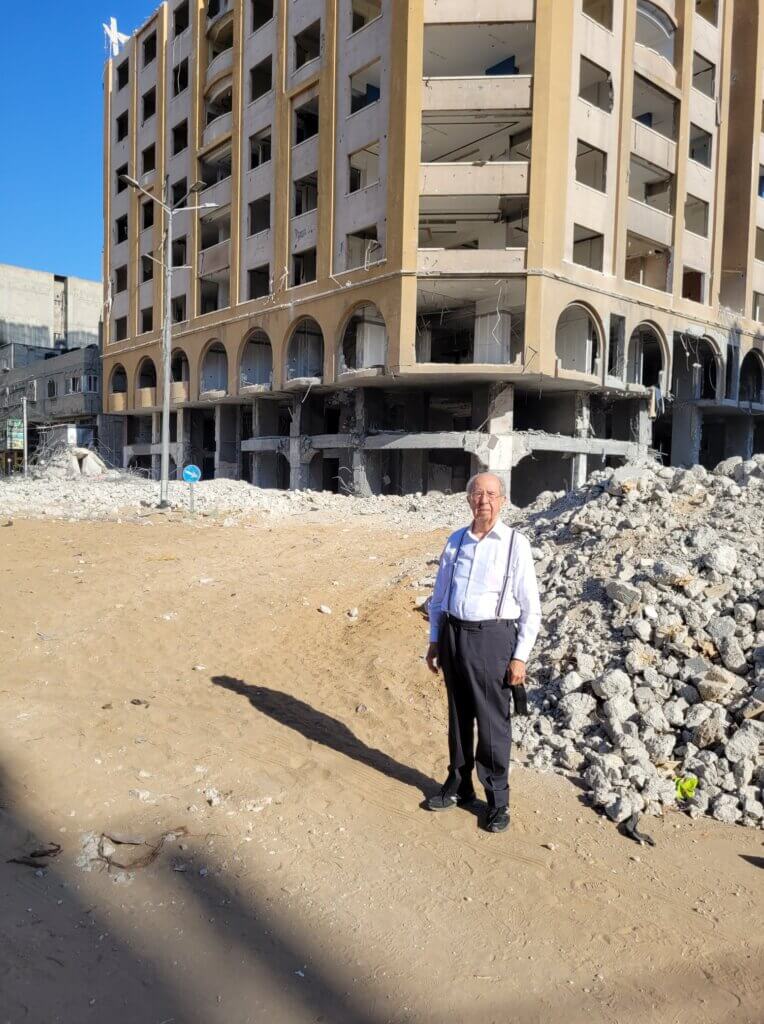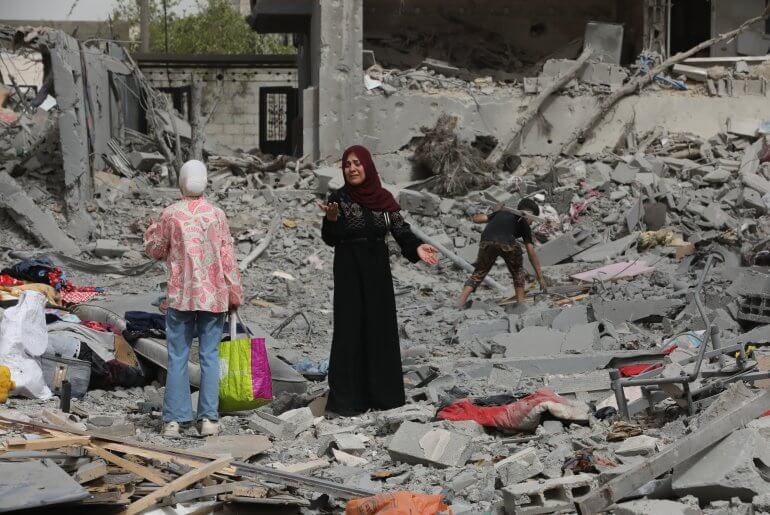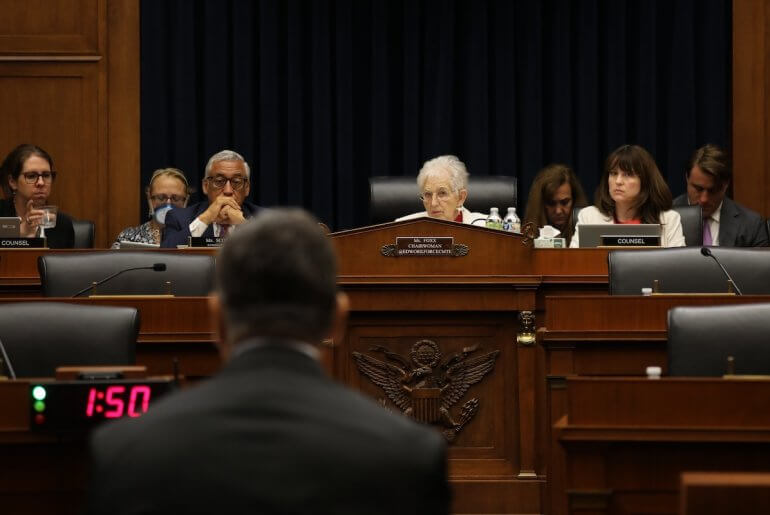Return?
In November 2021, I returned to the Gaza Strip after five decades of forced absence, save for a quick visit. In the three weeks I spent there I saw how the 200,000 refugees from 247 villages, depopulated and expelled by Israel in 1948, forged a life for themselves, multiplied ten times since, in this tiny strip, just 30 kilometers by 12 kilometers.
As I drove from the infamous Rafah crossing to Gaza City, I could not recognize the place. As I knew it, there were two villages and two towns separated by green fields. Now, I saw a continuous stretch of structures on both sides of the road with billboards covering the whole landscape, describing its new life, shops, houses, and schools. These billboards of all types are welded together in a new form of cohesive urban life at a density of 7,000 persons/square kilometer.
When I say I returned, it was an illusion. It was not the fulfillment of the Right of Return that I, like millions of Palestinians, strive for. It was not the Return we fought for over the last 70 years, by armed resistance, protests, writings, conferences. This was only a return to my first refugee camp.
Early on the morning of my arrival I drove to the nearest point at the barbed wire and looked at my home, where I was born, visible at the horizon. I stood there, looking at my home, one kilometer away, separated from it by a nest of Israeli snipers.
Here was my home from which I was forced to leave at gunpoint on May 14, 1948 on the same day when Ben-Gurion declared the state of Polish-Russian settlers on my land. I was ten with black hair. Now 70 years later, my hair has turned silver, and I am still unable to make a real Return. Not one day has passed since without fighting for our right to return.
I am not alone in this quest, of course. As I stood next to a Palestinian soldier at the Armistice Line, nearest to the Israeli guns, he showed me his stomach, riddled with 16 Israeli bullets. After so many operations, he survived and returned to his post facing the Israelis.
Life and death entwined
Gaza has never had a moment of peace. After the 1948 expulsion, refugee camps were attacked regularly. In the last decade, the Gaza Strip has been attacked by major air, sea and artillery operations half a dozen times. Children’s lives are measured by how many Israeli wars they have endured.
If they survived, children cannot sleep during wars or in-between. I woke up frequently at 3:00 am to the hum of Israeli drones flying overhead, day and night, watching every move, threatening to drop bombs any moment.
As I walked in Gaza’s streets, I saw the rubble of destroyed buildings, next to still standing towers. The street looked like a toothless mouth.

I spoke to Dr. Yasser Abu Jamie, the Director General of the Gaza Community Mental Health Programme, who told me that over 50% of children in Gaza suffer from PTSD. Nearly 90% had experienced personal trauma. Cases of bed wetting and family violence are high, compared to a traditional conservative society.
Under the rubble, the corpses of inhabitants have been removed but there is no place for them to be buried. I saw a sign at one cemetery which says, “Do not bury here. The cemetery is full.” But the dead are remembered as Martyrs. In many neighborhoods, I saw signs with names and pictures of those killed in the area. Life and death are entwined in Gaza.
I had to get an official paper signed. It took some days because I was told the offices had to be evacuated. On that day, F-16s were flying sorties in preparation for a new air raid.
As I frequently say to human rights advocates in the West, spare me your historical examples and just go to Gaza.
Resilience
On the bright side, the resilience of the people is astounding. Whatever western politics may say of Hamas, when Israel attacks, everybody in Gaza forms a solid front. They seek shelter in schools, families huddle together, ambulances rush to the bloody scenes, others remove rubble to rescue their loved ones.

I have not seen evidence of panic or revolt. There was bitter talk about the hypocritical western world, blaming the victims as “terrorists” and a disbelief at the claim that “Israel was defending itself.”
This resilience takes many shapes. The Mediterranean coast is the only window on the outside world, but this is only by sight, not in reality. People make use of it by setting tables and chairs and offering tea and food along the shoreline. With great optimism, they put sign boards naming the place the Riviera or Palm Beach.
Every tiny plot of land is cultivated. I was amazed to be told there is no shortage of vegetables in Gaza. There are places where plants are grown in sheds with two levels. Flowers are flown to Holland when Israelis let them. The rubble of destroyed buildings was converted to a breakwater for a new port at Khan Younis.
Traffic in Gaza is a nightmare. Vehicles of all types — cars, trucks, improvised tricycles, donkey-drawn carts — are all fighting for a space on the road. It is surprising that traffic accidents are not so severe.

International aid
Not all the world is oblivious to the suffering in Gaza. There are tens of signs on buildings proclaiming this or that is built from aid from another country. I visited some of these establishments. Their buildings are neat and generally well equipped. The Palestinian staff are well qualified. Every vacancy receives tens of applicants. I looked at their balance sheets. The obvious conclusion is that the buildings are sufficiently complete but the staff salaries are meager. There is a tendency in foreign aid to pay once for a facility but neglect to staff it sufficiently. Beneficial production of work and reduction of vast unemployment is served by providing sufficient salaries’ budget.
But the glaring omission in foreign aid is the lack of condemnation of Israeli crimes. It is hypocritical to give first aid to the injured and tools to bury the dead without stopping the murderer from repeatedly committing his crime in the first place. While I admired the fine buildings and efficient staff, the silence about Israeli crimes makes this kind of charity a hollow gesture.
Melting pot
Life goes on in Gaza in many other ways. It became a melting pot for 247 villages in southern Palestine. I recall the time when we could distinguish different villages by the sight of the embroidered dresses of women. I also recall recognizing where they come from by their accents as they speak. Most of this has gone, especially among the young. The common dress for women is a sort of black garb. Underneath they may wear what they like. Their accent in public is a new form of common Ghazzawi talk.

The family ties are still very strong although some faded away at the edges. This is one reason how the blockade and siege have been overcome, largely by distributing the meager resources among kith and kin. Those who have a bit distribute it among the extended family.
Socially too the cohesion of the family is largely maintained. Marriages among the same clan is still preferred, although the population density has made the social norms of various villages very similar.
Old habits die hard. Although women’s education is near 100 percent, the privacy of women’s life is still protected, especially in traditional families. I saw a wedding invitation card specifying the name of the groom in full and the bride in initials only.
When Palestinians leave the Gaza concentration camp, they blossom. There are many names in NASA and US high-tech companies of Gazans who made their mark after escaping from Gaza prison.
Gaza is Palestine
After all that being said, Gaza is the only Palestine left. Gaza never hoisted a flag except that of Palestine. Gaza is the first, and now the only, place of stubborn resistance to the Israeli occupation of Palestine. Gaza is the place where the first Palestinian Legislative Council was elected in 1962. From Gaza traveled the first ever Palestinian delegation to the UN to speak in the name of Palestine.
Gaza is Palestine. “Stay, resist and fight for all Palestine.” That was my message to them in my speeches.
Salman Abu Sitta
Salman Abu Sitta is the founder and president of the Palestine Land Society, London, dedicated to the documentation of Palestine’s land and People. He is the author of six books on Palestine including the compendium “Atlas of Palestine 1917- 1966,” English and Arabic editions, the “Atlas of the Return Journey” and over 300 papers and articles on the Palestinian refugees, the Right of Return, and the history of al Nakba and human rights. He is credited with extensive documentation and mapping of Palestine’s land and people over 40 years. His widely acclaimed memoir “Mapping my Return” describes his life in Palestine and his long struggle as a refugee to return home.



